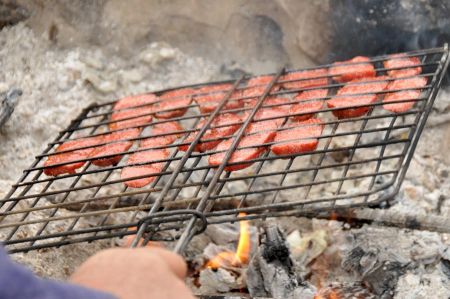Turkish Cuisine - a fresh variety of vegetables and fruit
The influence of different traditions, habits and customs of the Mediterranean on the Turkish life style have created another face of Turkish culture-a huge variety of different tastes in Turkish cuisine.
Some of the meals and drinks, based on their special taste or on the way they have been made, have encouraged foreigners to call them typical Turkish foods. For instance there is Turkish honey, Turkish coffee or Turkish tea. But if you take a walk around one of the markets, you will see such a huge variety of different vegetables and fruit sold fresh daily, you may not believe what you see. There is a market, or Turkish “Pazar”, once a week, even in small villages.
You will enjoy your day on the market with its colourful atmosphere and the sounds of the local tradesmen offering their wares. You may not have seen such a rich variety of fruit and vegetables before, all sold fresh and cheap. About 99 % of all the fruit and vegetables sold are grown in Turkey. For instance, peaches, grenadine apples, melons or blue figs.
It is nice to know that all these fresh ingredients are used in Turkish cuisine. The different tastes and the spices used will soon make an enthusiastic supporter of Turkish cuisine out of you.
.
Delikate Cuisine
These are just a few of the delectable items from a list of extraordinary specialities which are offered on the Aegean and the Mediterranean coasts of Turkey.
Today the range of Turkish cuisine mirrors the size of the former Ottoman kingdom, which started in the northern part of Africa, some parts of the Near East, the Balkan States and through to the gates of Vienna.
The cuisine inherited from the Ottoman and Seldjuk kingdoms includes a huge variety of starters, soups, meat and vegetable dishes, delicious desserts and, of course, original Turkish coffee.
At the times of the Ottoman kingdom Istanbul, Izmir and Bursa were the major cities with regard to delicious meals because of the European influence and the cosmopolitan lifestyle of their inhabitants. There was really no exchange with the people from the country side, even though soldiers and government workers from these centres travelled right through the nation offering their services and duties.
Until the foundation of the Turkish Republic in 1923, the only dishes in the countryside were the meat based menus of the Turkish people from their life style as nomads from the Asian Steppes. After the breakdown of the Osman kingdom at the beginning of the 20th century the Turkish cuisine changed. With the founding of the young republic, hordes of young Anatolian village people moved into the big towns and to the coastal areas and brought with them their regional products as well as their menus and dishes. Lots of Turkish people from other Mediterranean countries also came back to their homeland and by doing so enriched the Turkish cuisine with new ideas for preparing food. From Greece and Crete new recipes for seafood were brought to the Aegean coast and lots of new spices from the Near East were introduced into the eastern Mediterranean coast.
Fresh Additives
Turkey belongs to a group of just a few countries which are self sufficient in their food production. From the major cities in the European part of the country to the small villages next to the Russian border the traveller will always find markets which offer a rich variety of fresh foods, yoghurts, honey and marmalade. There is always a wonderful atmosphere on these markets. All the merchants know each other, exchange big welcomes with each other, choose their goods with great enthusiasm and haggle about each single melon, as if they were on the market for the first time. You are always welcome and all the traders will try, by talking and handing out small slices of melon, creamy fresh cheese pieces or shining, salty black olives to win you over as a new customer. Enjoy this exotic life style and have a nice day on the market for buying all the ingredients to prepare original Turkish delicious meals.
Please read as well:
